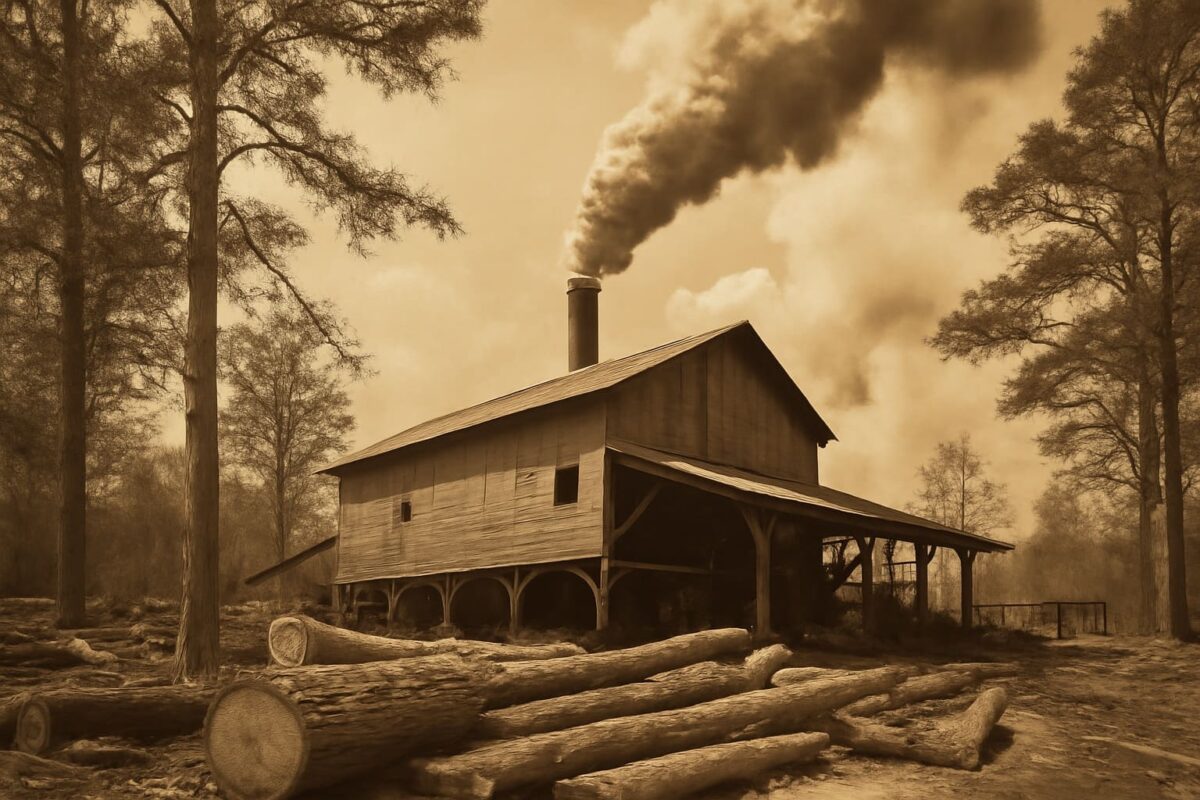Polk County’s development was significantly influenced by the timber and farming industries, which shaped life in East Texas throughout the 19th and 20th centuries.
The timber boom led to the rapid growth of sawmill towns. These settlements often appeared near logging routes and were populated by workers and their families. When nearby forests were exhausted, the economic activity dwindled, and many of these towns were abandoned or absorbed into larger communities.
Education followed the population shifts. Most communities had their local schools, but declining numbers led to closures or consolidations with schools in nearby towns. Today, traces of these schools may still be found in old photographs, building remnants, or local archives.
Farming also played a central role in the region’s history, especially along the Trinity River. Large plantations and smaller farms supported both landowners and a sizable labor force, including sharecroppers and tenant farmers. As agriculture declined due to economic and technological changes, many families moved away in search of work elsewhere.
The creation of Lake Livingston brought further changes. To construct the reservoir, some communities were flooded and now lie beneath the lake’s surface. These lost towns are remembered through local cemeteries, family narratives, and remnants such as brick foundations or road outlines.
Although many of these places no longer function as towns, they remain part of Polk County’s historical landscape. Their legacies endure through historical records, land maps, and the memories of descendants who still reside in this area.
